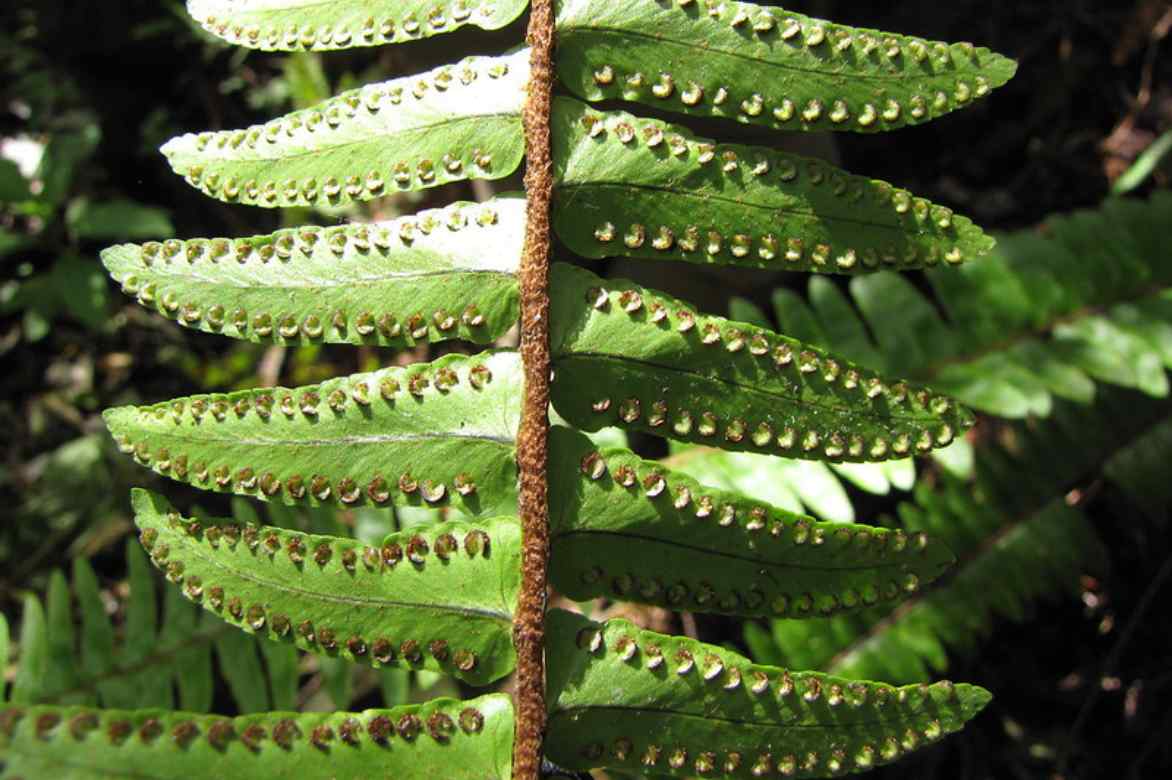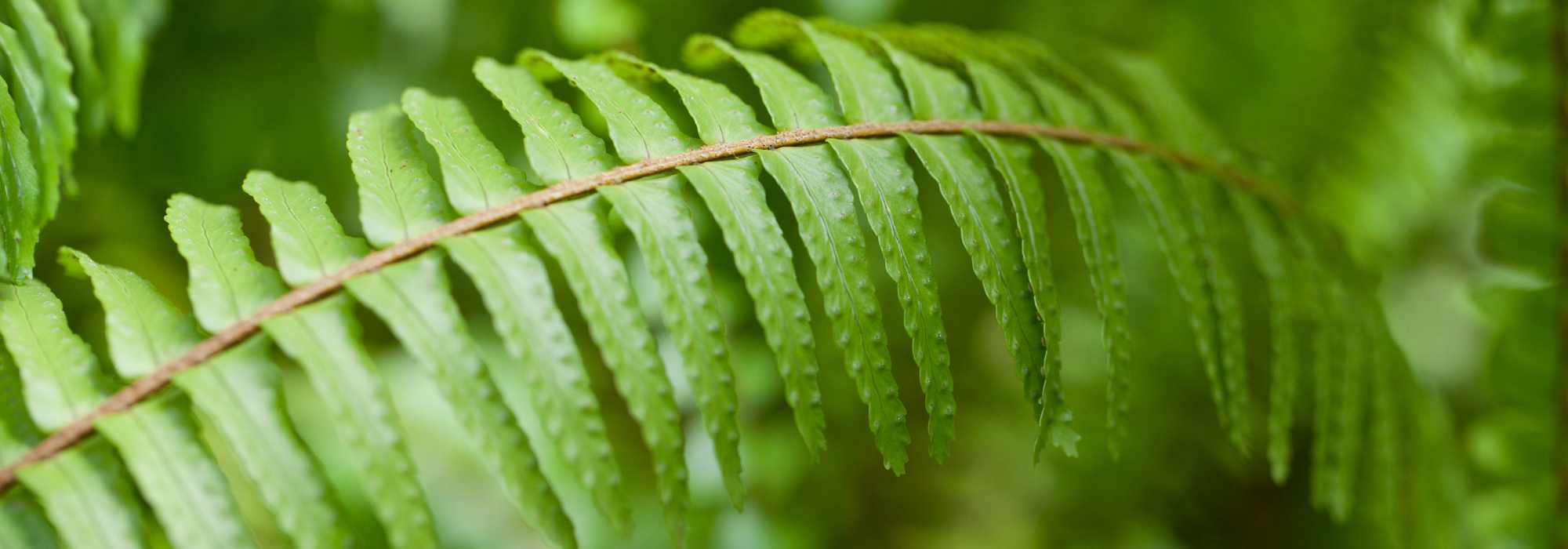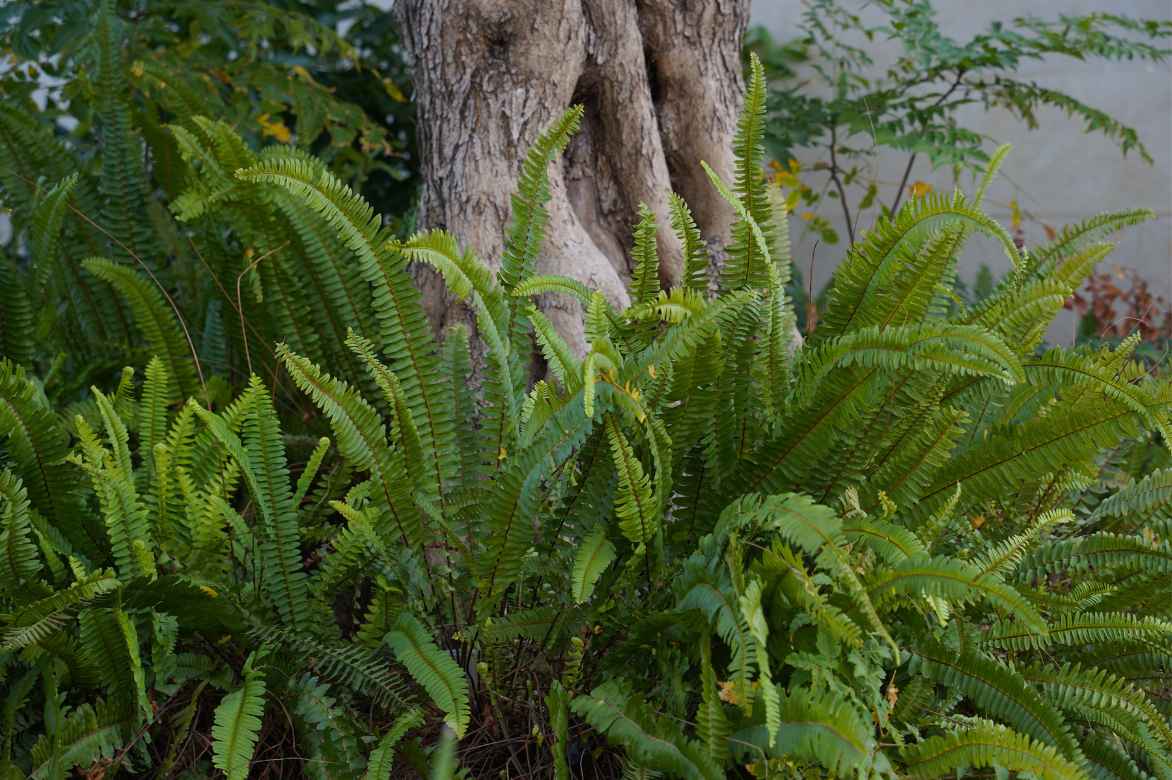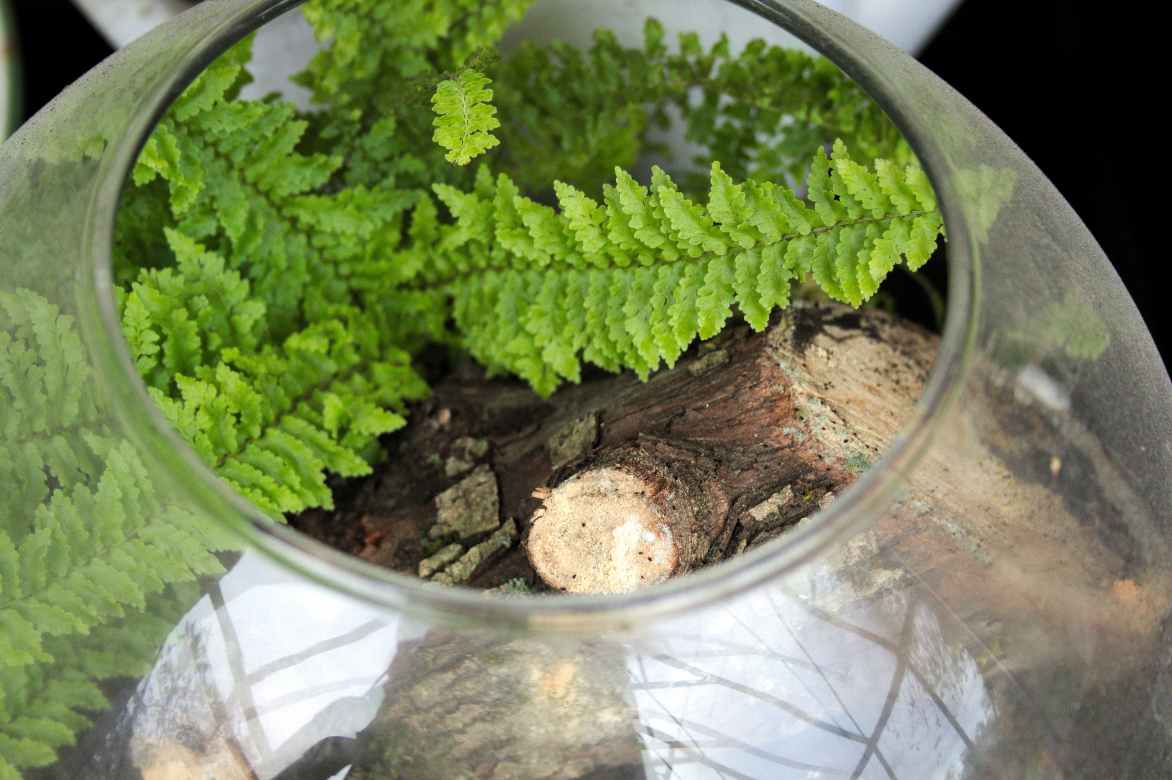Botany
Botanical data
-
Latin name
Nephrolepis
-
Family
Dryopteridaceae
-
Common name
Boston fern, trailing fern
-
Flowering
rare indoors
-
Height
30 to 50 cm
-
Exposure
Bright
-
Soil type
Rich, well-drained substrate
-
Hardiness
Frost-sensitive
The Nephrolepis, better known as the Boston fern, belongs to the Nephrolepidaceae family or, according to some classifications, to the Dryopteridaceae family. Its scientific name comes from the Greek nephros, meaning “kidney,” and lepis, meaning “scale,” referring to the characteristic shape of its sori, the structures containing spores located on the underside of the fronds.
In its natural habitat, Nephrolepis thrives in tropical and subtropical climates, often in humid undergrowth or as an epiphyte on other plants. It is found in Central and South America, Southeast Asia, and Australia, where it enjoys a warm and humid atmosphere. Generally not hardy, it is cultivated indoors in places like conservatories, where its lovely foliage persists through winter. The genus includes around thirty species. Among the most commonly cultivated species are:
- Nephrolepis exaltata, the most widespread, with the famous ‘Boston’ variety prized for its gracefully arching fronds.
- Nephrolepis cordifolia, distinguished by its hardiness down to -8°C and a more compact habit.
- Nephrolepis obliterata, sometimes called the Kimberley fern, with stiffer fronds.

Nephrolepis obliterata Kimberley
Nephrolepis exaltata boasts a variety of cultivars, each with its unique charm:
- ‘Bostoniensis’: admired for its long, bright green fronds and generously trailing habit.
- ‘Green Lady’: known for its thicker, slightly undulate fronds, offering a lush and dense appearance.
- ‘Duffii’: features compact fronds with round, glossy leaves, ideal for those seeking a touch of originality.
- ‘Fluffy Ruffles’: famous for its highly divided and curly fronds, adding a unique and airy texture.
- ‘Teddy Junior’: a dwarf version with short, dense fronds, perfect for small spaces or terrariums.
- ‘Whitmanii’: displays wider, sturdier fronds with vigorous growth and a beautiful green colour.

Nephrolepis exaltata
Nephrolepis is a perennial fern that forms a dense, elegant clump with an upright habit, reaching about 50 cm in height. It spreads indefinitely thanks to its running rhizomatous system. In pots, its expansion will be contained.
The foliage stands out for its delicacy and elegance, composed of soft, elongated fronds, finely divided, giving the plant a light and airy habit. These fronds, measuring up to 50 cm long in mature plants, are typically arched and emerge from a thin yet sturdy central rachis. The pinnae, or leaflets, that make up each frond are inserted alternately or oppositely, depending on the species. They are narrow, lanceolate, and often slightly asymmetrical at their base. Their edges can be entire, finely crenate, or delicately undulate, enhancing the delicate appearance of the foliage. Each pinna is traversed by a prominent midrib, which structures the leaf and contributes to its flexibility. In Nephrolepis exaltata, the emblematic species of the genus, the fronds are particularly long and flexible, adopting a naturally trailing habit.
The foliage colour varies depending on growing conditions, ranging from bright green to deep green, sometimes tinged with slightly glaucous hues. The surface of the fronds is smooth and sometimes subtly glossy.
Like all ferns, Nephrolepis produces neither flowers nor fruits and reproduces by dispersing spores. These spores form under the fronds, grouped within structures called sori (or sores). In Nephrolepis, these sori are covered by membranous indusia, small protective scale-like structures that regulate spore release at ripeness.

Nephrolepis exaltata (© Forest and Kim Starr)
Appreciated for its dense and airy foliage, this fern is also valued indoors for its ability to humidify the air and absorb certain toxins present in the atmosphere, such as formaldehyde and xylene. It is therefore ideal for improving air quality in homes and apartments.












































Comments